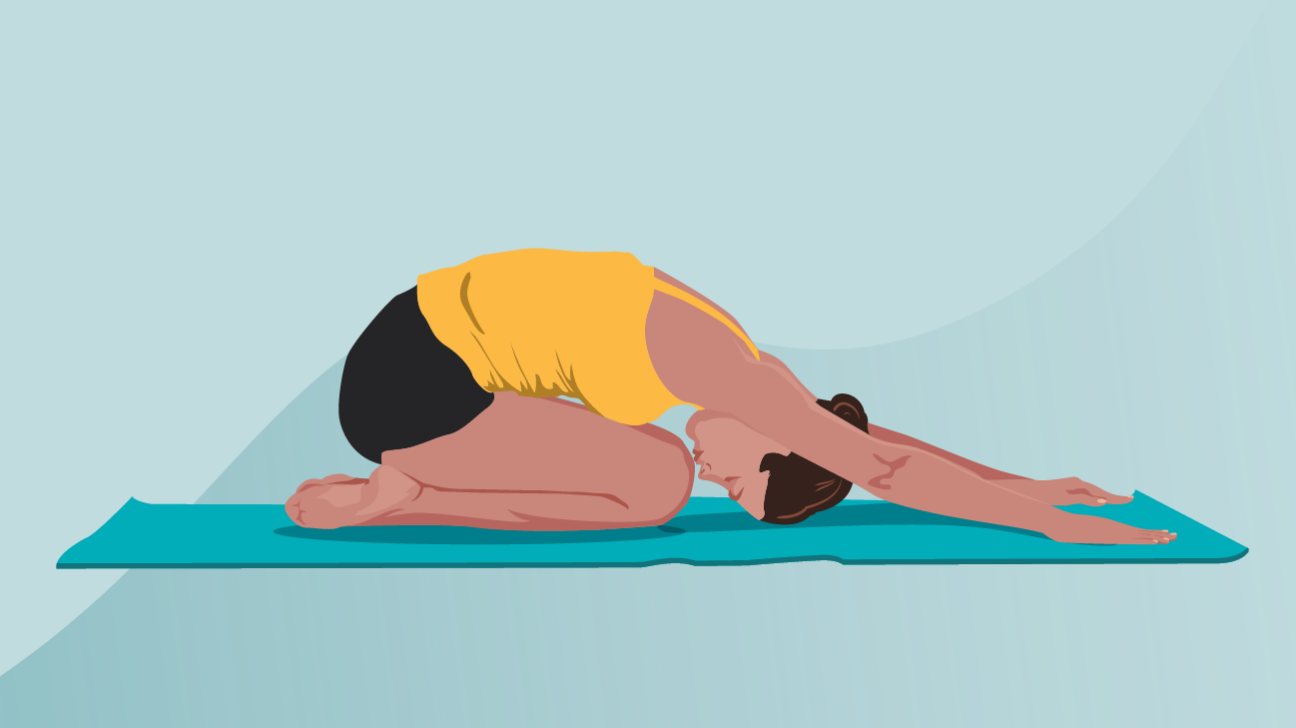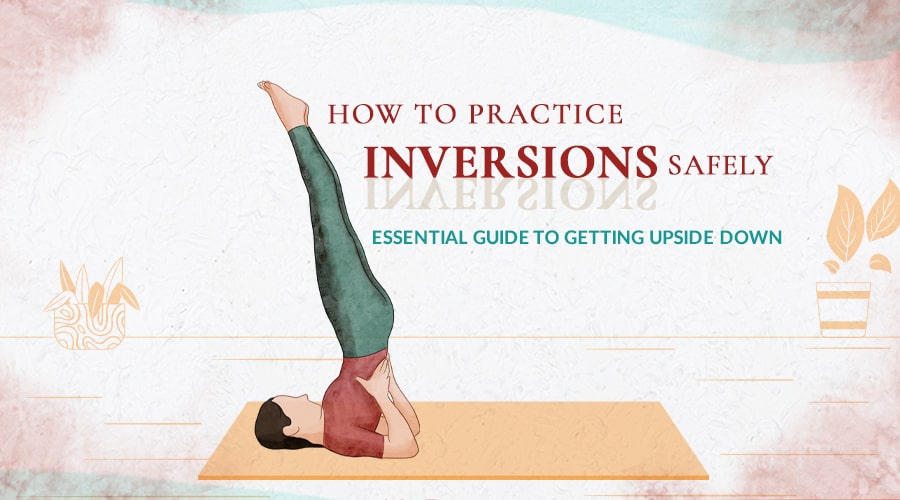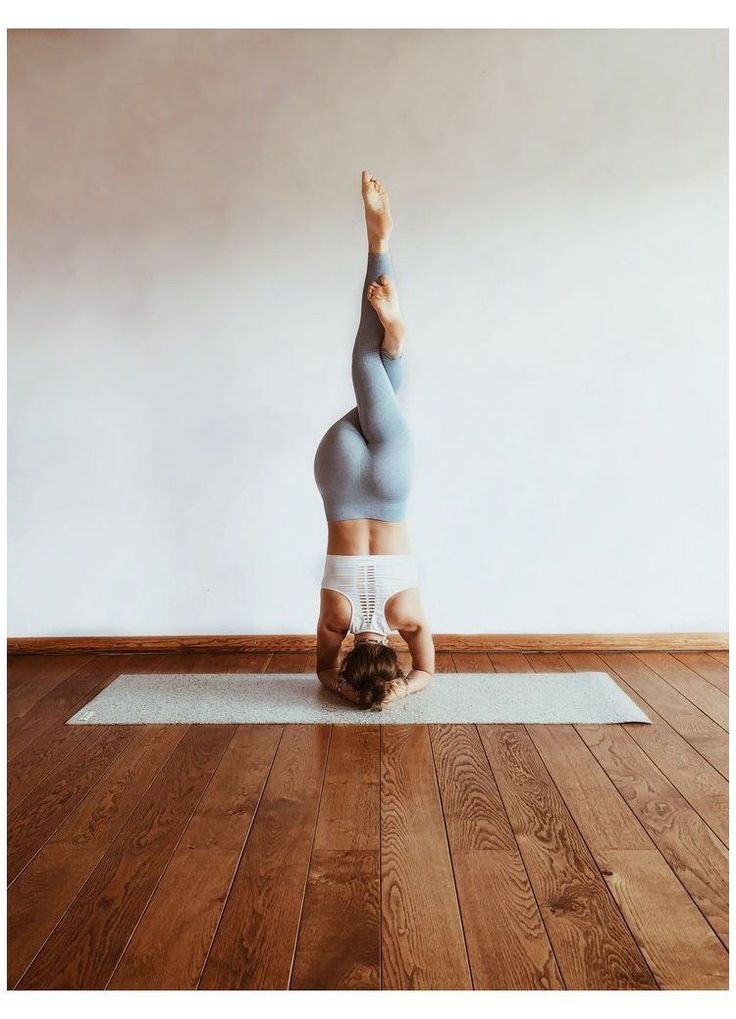Yoga inversion is a practice that involves turning the body upside down, and it offers various benefits to improve strength, balance, and mental focus. This article aims to provide a comprehensive guide to yoga inversion, including what it is and how you can benefit from incorporating it into your practice.
Delve into the world of inversions as we explore the anatomy and techniques behind these postures and discover the physical, mental, and emotional advantages that they can bring. Whether you’re a seasoned yogi or a beginner, this guide will give you the knowledge and confidence to take your yoga practice to new heights.

What Is Yoga Inversion
Yoga inversion, a practice where your body is upside down, offers numerous benefits, such as improving strength, flexibility, and circulation, as well as relieving stress and anxiety. It can be achieved through poses like headstands, handstands, and shoulder stands. Embrace the upside-down experience to enhance your yoga journey.
Definition Of Yoga Inversion
Yoga inversion refers to a category of yoga poses that involve turning the body upside down or placing the head below the heart. It is a practice that challenges gravity by reversing the body’s usual alignment. By using various techniques like arm balance, using props, or hanging from an apparatus, yoga inversion helps to create an opposite gravitational force, providing a multitude of physical and mental benefits alongside a sense of empowerment and balance.
Types Of Yoga Inversion Poses
There are several types of yoga inversion poses that one can incorporate into their practice, each catering to different levels of difficulty and experience. Here’s an overview of a few famous inversion poses:
- 1. Headstand (Sirsasana): A classic inverted pose where you balance the weight of your body on your forearms and the crown of your head.
- 2. Handstand (Adho Mukha Vrksasana): This pose involves balancing the body entirely on the hands, with the legs extended upwards towards the ceiling.
- 3. Forearm Stand (Pincha Mayurasana): In this pose, the weight of the body rests on the forearms as the legs extend up towards the sky.
- 4. Shoulder Stand (Sarvangasana): In this pose, the body is supported by the shoulders while the legs extend upwards, creating a straight line from the neck to the toes.
- 5. Supported Headstand (Salamba Sirsasana): This variation utilizes the support of a prop, typically a wall or a yoga block, to help maintain balance and stability.
Practicing yoga inversion poses not only offers a change in perspective physically but also comes with a range of benefits. From improved circulation and lymphatic drainage to increased core and upper-body strength, these poses can significantly enhance your flexibility and balance. Additionally, by flipping your world upside down, yoga inversions activate the parasympathetic nervous system, promoting relaxation and reducing stress.
Benefits Of Yoga Inversion
Yoga inversion, also known as upside-down yoga poses, may seem challenging and intimidating at first, but the benefits it offers are truly worth exploring. Beyond the physical aspect, yoga inversion provides numerous advantages for your mental and emotional well-being. Whether you’re a seasoned yogi or just starting your yoga journey, incorporating inversions into your practice can help you unlock a whole new level of balance, strength, and mindfulness.
Physical Benefits
Practicing yoga inversions can have a profound impact on your physical health. Here are some of the critical physical benefits you can experience:
- Improved Blood Circulation: When you invert, your heart is positioned above your head, aiding blood flow to your brain. This increased circulation can enhance brain function, improve memory, and boost focus.
- Enhanced Core Strength: Inverting requires engaging your core muscles to maintain balance and stability, resulting in more muscular abs, back, and pelvic floor muscles.
- Increased Spinal Flexibility: As you invert, the spine decompresses and experiences a gentle stretch, relieving tension and promoting flexibility.
- Strengthened Upper Body: Inversions challenge and engage your arms, shoulders, and upper back, helping to build strength and tone these areas.
- Improved Digestion: Certain yoga inversions, such as the Legs Up the Wall pose, can stimulate the digestive system, enhance bowel movements, and relieve constipation.
Mental Benefits
Engaging in yoga inversions goes beyond the physical gains and also offers various mental advantages. Here are some of the mental benefits you can experience:
- Reduced Stress and Anxiety: Inverting encourages deep breathing and activates the parasympathetic nervous system, promoting relaxation and reducing stress and anxiety levels.
- Enhanced Focus and Clarity: Inversions require concentration and focus, which can enhance mental clarity, improve memory, and sharpen cognitive skills.
- Improved Sleep: The calming effect of inversions can help alleviate insomnia and promote a better night’s sleep, leaving you feeling refreshed and rejuvenated.
- Boosted Energy and Alertness: Inversions increase blood flow to the brain, delivering a surge of oxygen and nutrients. This can enhance energy levels and boost mental alertness.
Emotional Benefits
In addition to physical and mental advantages, yoga inversions can have a positive impact on your emotional well-being. Here are some emotional benefits of practicing inversions:
- Increased Self-Confidence: As you conquer your fears and overcome the challenges of inversions, your self-confidence and self-esteem can soar.
- Greater Mind-Body Connection: Inversions force you to be present at the moment, fostering a deeper connection between your mind and body and creating a sense of harmony and balance.
- Enhanced Emotional Stability: Inversions can help regulate emotions, reduce mood swings, and provide a sense of calmness and stability.
- Release of Fear and Letting Go: Being upside down can symbolize letting go of fear and surrendering to the unknown, facilitating emotional release and a sense of liberation.
How To Practice Yoga Inversion Safely
Yoga inversions can provide a myriad of benefits for your body and mind, such as improved circulation, increased strength, and enhanced focus. However, it’s crucial to approach these inversions with caution to prevent injuries and maintain a safe practice. By following proper preparation and warm-up techniques, focusing on correct alignment and form, utilizing props and modifications, as well as listening to your body’s limits, you can enjoy the benefits of yoga inversions while minimizing the risks.
Preparation And Warm-up
Before attempting yoga inversions, it’s essential to prepare your body by performing the right warm-up exercises. This helps to gradually open up and engage the muscles you’ll be using during the inversions, reducing the risk of strain or injury. Incorporate exercises that target your core, shoulders, and wrists to build strength and flexibility in these specific areas. Warming up not only prepares your body physically but also helps you mentally transition into the inversion practice.
Proper Alignment And Form
When practicing yoga inversions, maintaining proper alignment and form is crucial for both effectiveness and safety. Aligning your body correctly not only helps you achieve the desired benefits but also minimizes the strain on your joints and muscles. Focus on engaging the appropriate muscles, keeping your spine neutral, and distributing the weight evenly throughout your body. Make sure to keep your neck relaxed and your gaze soft, avoiding any unnecessary tension. Practicing under the guidance of a certified yoga instructor can help you refine your alignment and form to perform inversions safely.
Using Props And Modifications
Props and modifications can be instrumental in supporting your body during yoga inversions, especially if you’re still developing the strength and flexibility required for advanced poses. Props like yoga blocks, straps, and bolsters can provide stability, balance, and assistance in achieving proper alignment. Additionally, modifications allow you to adapt the inversions to your current level of practice, gradually building strength and confidence. Explore different variations of inversions that suit your abilities, and gradually progress towards more advanced poses as you feel comfortable and stable.
Listening To Your Body’s Limits
Awareness of your body’s limits is essential throughout your yoga inversion practice. Everybody is unique, and it’s essential to honor your capabilities and limitations. Pushing beyond your limits can lead to injuries, so it’s crucial to listen to the signals your body sends you. If you experience any pain, discomfort, or dizziness during an inversion, gently come out of the pose, rest, and assess if you’re ready to try again. Learning to trust your body’s signals and responding to them appropriately is integral to maintaining a safe and sustainable yoga inversion practice.


Frequently Asked Questions Of Yoga Inversion: A Guide To What It Is, And How You Can Benefit
What Is The Purpose Of Yoga Inversions?
Yoga inversions help improve circulation, increase strength, and enhance balance and focus.
How To Do Yoga Inversions For Beginners?
To do yoga inversions as a beginner, start with supported variations like a supported headstand using a wall or chair. Gradually build core and upper body strength, work on balance, and practice with proper alignment. Remember to listen to your body, go at your own pace, and seek guidance from an experienced yoga teacher.
What Are The Contraindications For Yoga Inversions?
Contraindications for yoga inversions include high blood pressure, heart conditions, pregnancy, neck or spine injuries, and glaucoma.
What Are The Benefits Of Inversions For The Heart?
Inversions can benefit the heart by improving circulation and reducing strain. They promote blood flow to the brain and help increase oxygen supply to the heart. This can enhance cardiovascular health and decrease the risk of heart disease.
Conclusion
Incorporating yoga inversions into your practice can have numerous benefits for both your mind and body. From improving circulation and boosting your immune system to increasing strength and flexibility, inversions offer a unique and transformative experience. By embracing these powerful poses and exploring their variations, you can enhance your yoga journey and take your practice to new heights.
So, go ahead and embrace the upside-down world of yoga inversions – your body and mind will thank you.

